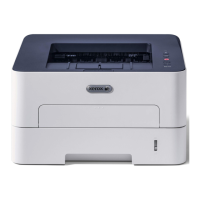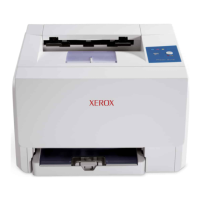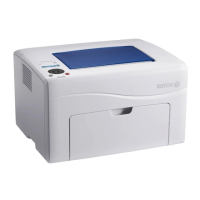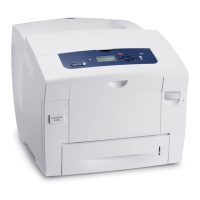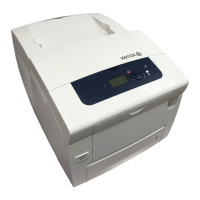Rapid Context Switching. When responding to a new set of
interrupt-initiated
circumstances, a computer system must
preserve
the
current operating environment, for
continuance
later,
while setting
up
the
new environment.
This
changing
of environments
must
be done
quickly,
with a minimum of
II
overhead" time costs.
Anyone
of the four blocks of
generar-purpose arithmetic registers
can,
if desired, be
as-
signed to a specific environment. All
relevant
information
about the current environment (instruction address, current
general register
block,
memory-protection key,
etc.)
is
kept in
the
program status words. A single instruction
stores
the
current program status words anywhere in memory
and loads new ones
from
memory to establish a new
en-
vironment, which includes information identifying a new
block of general-purpose registers. Thus, the system's
operating environment
can
be preserved and changed
com-
pletely
through
the
execution
of a single instruction.
Memory Protection.
Both
foreground (real-time) and
back-
ground
can
run concurrently in
the
system because a
fore-
ground program
is
protected
against
destruction
by
an
un-
checked
background program. Under operating system
control,
the memory
access-protection
feature prevents
accessing memory for specified combinations of reading,
writing, and instruction acquisition.
Variable
Precision Arithmetic. Much of the
data
encoun-
tered in
real-time
systems
are
16
bits or less.
To
process
this
data
efficiently,
both halfword and fullword arithmetic
operations
are
provided.
For
extended precision,
double-
word arithmetic operations
are
also included.
Direct
Input/Output.
For
handling asynchronous
I/O,
a
32-bi
t word
can
be transferred
di
rectly
between any
genera
1-
purpose register and external devices.
Reliability,
Maintainability,
Availability. The
capabil-
ities
described in the section,
..
Time-Sharing Features"
apply
equally
to
the
real-time
environment.
MULTIUSE
FEATURES
As
implemented in this system, IImultiuse" combines two or
more
application
areas. The
real-time
application
is
the
most
difficult
general computing task because of its severe
requirements. Similarly, another
difficult
multiuse task is
a time-sharing
application
that
includes one or more
real-
time processes. Because
the
system is designed on a
real-
time base,
it
is
qualified
for a mixture of
applications
in a
multiuse environment. Many hardware features
that
prove
valuable
for
certain
application
areas
are
equally useful in
others, although in different ways.
This
multiple
capa-
bi I ity makes the system particularly
effective
in
multi-
use applications.
The major multiuse features
are
described in
the
follow-
i
ng
paragraphs.
6 Muitiuse Features/Multiprocessor Features
Priority Interrupt System.
In
a multiuse environment, many
elements
operate
simulatneously and asynchronously. Thus,
an
efficient
priority interrupt system is essential.
It
allows
the
computer system to respond
quickly,
and
in proper
or-
der,
to the many demands made
on
it,
with
attendant
im-
provements in resource
efficiency.
Quick
Response. The many features
that
combine to
pro-
duce
a quick-response system (multiple register blocks,
rapid
context
saving, multiple push-pull operations) benefit
a
II
users because more of the system's resources
are
readily
available
at
any
instant.
Memory Protecti on.
The
memory protecti
on
features
protect
each
user
from
every other user and
guarantee
the
integrity
of programs essential to
critical
real-time
applications.
Input/Output.
Because of
the
wide range of
capacities
and
speeds,
the
I/O
system simultaneously satisfies
the
needs of
many different appl
ication
areas
economically, both in
terms of equipment and programming.
Instruction Set. The comprehensive instruction set provides
the
computational and
data-handling
capabilities
required
for widely differing
application
areas; therefore,
each
user's
program length and running time is minimized, and
the
throughput is maximized.
MULTIPROCESSOR
FEATURES
System design readi
Iy
permits expansion
to
shared memory
in a multiprocessor system. The system
can
contain
a
com-
bination of functional clusters,
each
of which in turn may
contain
multiple processors. The total number of clusters
is restricted to
the
maximum port limitation of six. All
pro-
cessors
ina
system may share common memory.
The following paragraphs describe the major multiprocessor
features of
the
system.
MULTIPROCESSOR
INTERLOCK
In a multiprocessor system, the basic processors often need
exclusive control of a system resource. This resource may
be a region of memory, a particular peripheral
device,
or,
in some cases, a specific software process. There
isa
special
instruction to provide this required multiprocessor interlock.
This special instruction,
LOAD
AND
SET,
unconditionally
sets a
Ill"
bit
inthe
sign position of the referenced memory
location during
the
restore
cycle
of
the
memory operation.
If
this
bit
had been previously set by another processor,
the
interlock is said to
be
"set" and
the
testing program
pro-
ceeds
to another task.
On
the
other hand, if the sign bit
of
the
tested location is a
zero,
the resource is
allocated
to
the testing processor,
and
simultaneously the interlock
is set for any other processor.
